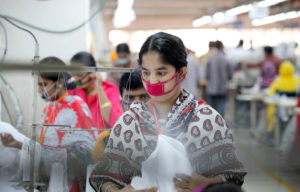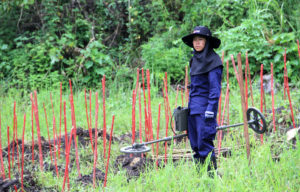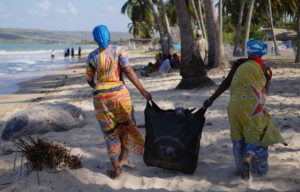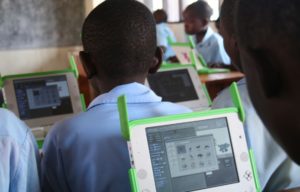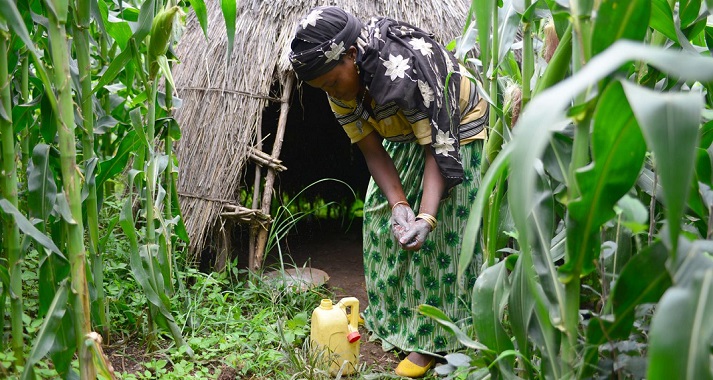
UNICEF Ethiopia
Toilets for the poor
Toilets and sanitation might not sound sexy, but toilets are incredibly important for universal health. Even simple latrines decrease infection risks and save lives.
Share
BØRNEfonden builds toilets
In 2014, BØRNEfonden has helped families in 131 villages in Mali and Togo with building latrines so they don’t have to use fields, bushes and forests as toilets. This means that 114.000 people now have access to toilets in their homes. The projects continue in 2015 in new villages so as to decrease the risks of infection for more families and children.
Between 2008 and 2012, BØRNEfonden has built 438 school latrines and 4611 family latrines.
The latrines are simple, but built using cement that prevents bacterial transfer.
Other categories
Since 1990, about two billion people have gotten access to improved sanitation and almost 300 million people have stopped practicing open defecation. This is an enormous, positive development. However, it’s not quite enough, according to the UN’s Millennium Development Goals. While the goal of securing clean drinking water for 88% of the world’s population was achieved 5 years before the deadline, the benchmark of sanitation – access to an infection free toilet – is 700 million people behind.
“It’s not as sexy to talk about toilets compared to clean water” Iben Rasmine Østergaard Marcussen, programme coordinator for health, including water and sanitation, in BØRNEfonden, which builds toilets in villages and schools in a handful countries in Western Africa. “It’s still taboo. But it is incredibly important”.
Progress is being made though. The proportion of people who “go” in the open is almost halved in 25 years. This means less human waste in fields, on roads and in rivers spreading bacteria, which is one of the main reasons for deadly diarrhea amongst children. In the same time, two billion people have gotten access to infection free toilets at home and in public. The toilets decrease the risk of infections and death but they also have other positive effects. For example, notable fewer girls in the developing countries drop out of school when they start menstruating, if their school has toilets.
Shame get people on the loo
Even though more and more people get access to toilets, the sanitation of the world is still lacking. About 1 billion people are still defecating in the open and 750.000 children die every year because of diarrhea. Therefore, BØRNEfonden is determined to ensure good sanitation in the areas they work in, says Iben Rasmine Østergaard Marcussen.
“We work in areas where maybe just 5% of the population has access to a toilet. Everyone else practices open defecation, maybe in the same river that they have to use for laundering and bathing”.
That’s a long way off from decent sanitation. By thinking long term and focusing on local solutions, though, it can be relatively doable to get an entire village to build and use latrines that protect against infection.
“We start off by educating them of the connection between faeces and bacteria, which spreads illness, and how it is important to contain bacteria in a toilet. Then we walk around the village with them, pointing out where fecal matter is lying on the ground. We play on feelings that it’s gross and dangerous”, explains Iben Rasmine Østergaard Marcussen.
The method of creating collective shame about open defecation has been used successfully in Bangladesh where the proportion of people defecating in the open has dropped from 19% to 3% between 2000-2012. In some cases, kids with whistles have shamed sinners who continue to defecate in the open until they start using toilets and decrease infection risks.
Washing hands in ash
When the people in the villages and schools understand why it’s unhealthy to have fecal matter lying around it’s time to build the latrines – and sustain people in using them.
“It’s easy to build a toilet. The difficult part is to get it to work for a long time”, says Iben Rasmine Østergaard Marcussen, People in many places never get used to closed toilets, and in other places, people use their shiny new toilets from the government or aid organizations for other uses like pantry or kitchen as it is the family’s nicest room.
Consequently, the latrines are built together with the families who’re going to use them, so they are a part of the solution. The families dig the pits for the latrines and BØRNEfonden gives cement and train local bricklayers to build and maintain the toilets. Using and training the local workforce to make the simple toilets, which work for 7-10 years, makes them sustainable. Then, the population get hygiene training and focus is yet again on local solutions. If there is a soap shortage one can wash hands in ash, for example.
Toilet dances makes it official
A sense of responsibility is the most important when people, who are used to “go” in the nature, have to get used to use a closed latrine.
When BØRNEfonden builds toilets in schools, they, together with the school management and parent’s committees, make a rotation order for the students who takes turns being responsible for the toilets – to keep them clean and stocked with soap. When BØRNEfonden has worked together with a village and there are enough latrines that no one has to defecate in the open – when the village can be declared “Open Defecation Free” – the entire village, local authorities and BØRNEfonden’s workers get together for a ceremony where all parties solemnly sign an agreement that they will use and maintain the toilets and that BØRNEfonden will help with technical assistance and motivation if needed. The ceremonies are properly concluded with dances and a festive mood.
“It might sound funny to us back home that an entire village is dancing for new latrines but a celebratory ceremony makes the whole thing very official for the local population and makes it a commitment. It makes people take responsibility for the toilets, which is the long term solution”, Iben Rasmine Østergaard Marcussen explains.
